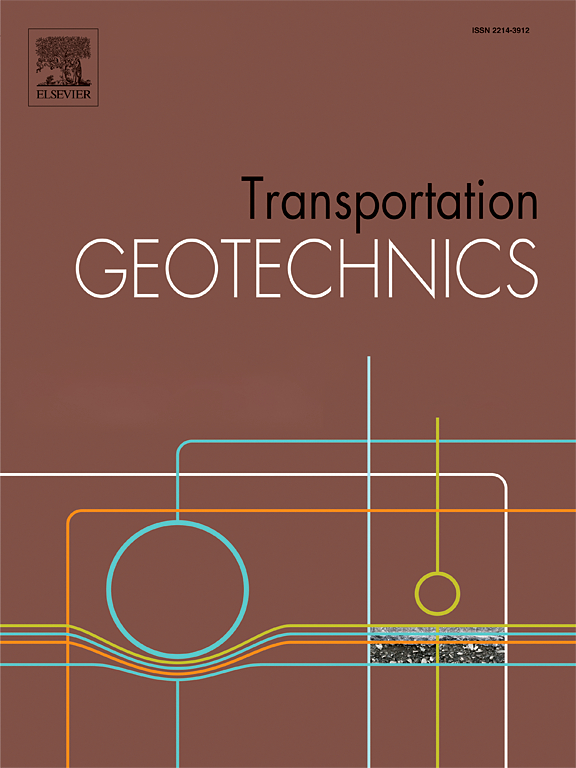Assessment of the maintenance effect for rock ballast bed during tamping operation
IF 4.9
2区 工程技术
Q1 ENGINEERING, CIVIL
引用次数: 0
Abstract
Tamping operation can damage rock ballast beds in railway; therefore, the assessment of maintenance effect is crucial for the safe running of a train. First, a ballasted track-tamping machine model was established using DEM-MFBD. Subsequently, a test method for the squeezing distance of tamping machine was developed and the model was verified. Using this model, the effects of tamping operation on mechanical states of rock ballast and sleeper were analyzed and the corresponding sensitive indicators were determined. Finally, the relationship between comprehensive mechanical state of ballast bed and squeezing distance was analyzed, and the assessment of maintenance effect was achieved. The results indicated that the coordination number and the compactness of ballast were sensitive to tamping, decreasing by 52.78% and 6.64% for 160 kN/mm stiffness, respectively. Additionally, the bottom contact density and pressure on sleeper were also sensitive to tamping, decreasing by 70.66% and 60.06%, respectively. The maintenance effect for rock ballast bed can be assessed according to the maximum squeezing distance of tamping machine.
求助全文
约1分钟内获得全文
求助全文
来源期刊

Transportation Geotechnics
Social Sciences-Transportation
CiteScore
8.10
自引率
11.30%
发文量
194
审稿时长
51 days
期刊介绍:
Transportation Geotechnics is a journal dedicated to publishing high-quality, theoretical, and applied papers that cover all facets of geotechnics for transportation infrastructure such as roads, highways, railways, underground railways, airfields, and waterways. The journal places a special emphasis on case studies that present original work relevant to the sustainable construction of transportation infrastructure. The scope of topics it addresses includes the geotechnical properties of geomaterials for sustainable and rational design and construction, the behavior of compacted and stabilized geomaterials, the use of geosynthetics and reinforcement in constructed layers and interlayers, ground improvement and slope stability for transportation infrastructures, compaction technology and management, maintenance technology, the impact of climate, embankments for highways and high-speed trains, transition zones, dredging, underwater geotechnics for infrastructure purposes, and the modeling of multi-layered structures and supporting ground under dynamic and repeated loads.
 求助内容:
求助内容: 应助结果提醒方式:
应助结果提醒方式:


